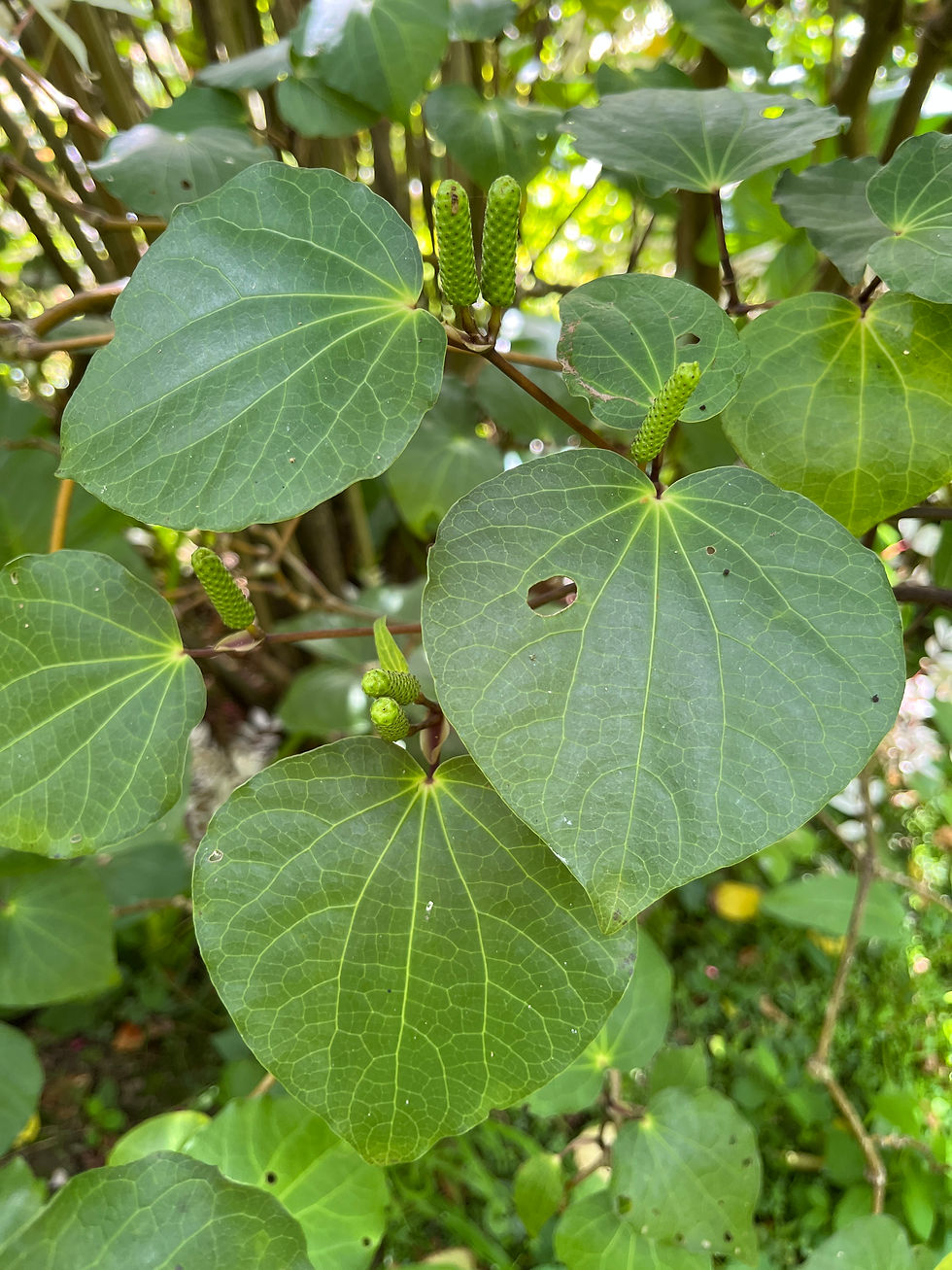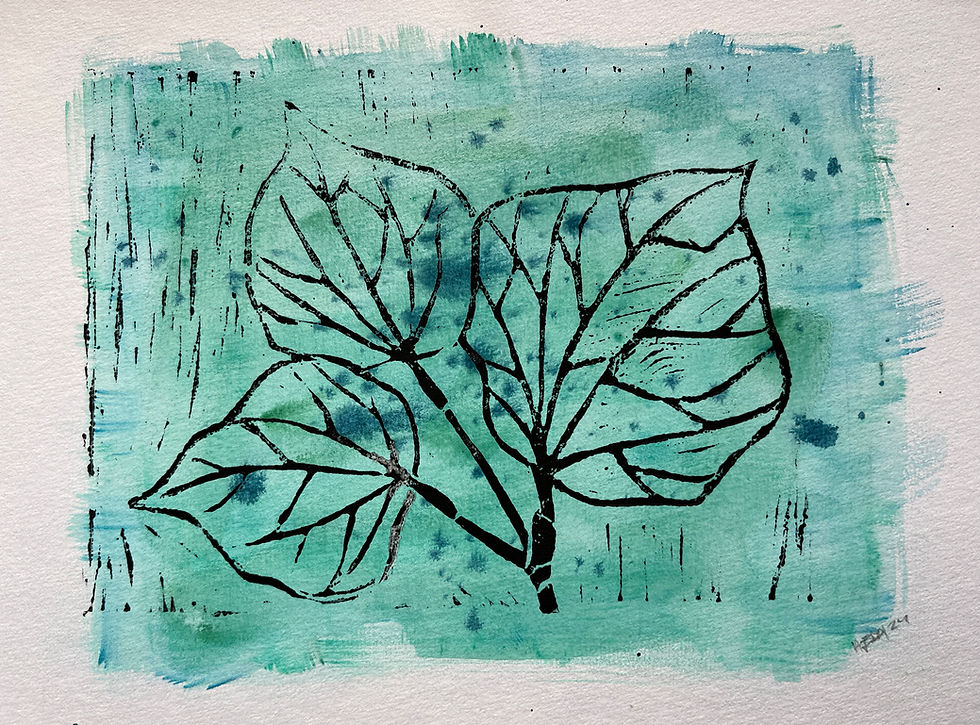- Heda Landscape Design Ltd.

- Nov 6, 2024
- 1 min read
Updated: Jan 10

Kawakawa, a truly extraordinary endemic plant, used in the traditional Rongoā Māori, the time-honoured Māori healing system. It is known for its anti-inflammatori and anti-bacterial properties.
Found in the understory of lowland forests throughout New Zealand, it prefers shade with free-draining moist soil. Once established it will tollerate considerable drought. Kawakawa is frost tender. It grows to about 3 m height and 2 m width, but can be judiciously pruned if neccesarry.

Its beautiful heart-shaped, aromatic leaves are quite often adorned with a lacy network of holes, created by another endemic symbiotic species - the caterpillar of the kawakawa moth. It is believed that the affected leaves are the ones with the most healing properties and consequently recomended to use when harvesting for medicinal purposes.
Male and female flowers are carried on separate spikes, often on separate plants. The female flower spikes gradually swell after pollination and become fleshy and turn yellow to bright orange attracting the kererū or New Zealand pigeon and tūī .
This plant is a must have for any garden.
Cleora scriptaria, kawakawa loper is the endemic moth species whose caterpillars are responsible for the holey appearance of the kawakawa leaves!








